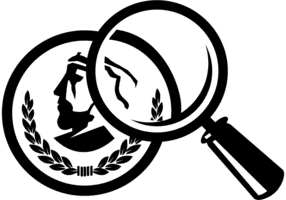Counting Coins Worksheets
How teachers approach teaching students how to count coins is always one of those topics that everyone does slightly differently. It does not make one method more effective or less, it is just different. I find a more hands-on approach to always benefit students the most. I then reinforce this with worksheets that help students learn how to sort, classify, and ultimately count large jars of change. A fun thing to do that can help you include student home life is to ask parents to pile their change into the jar and send it in with their child. We then go crazy counting each other's jars. These lessons and worksheets help students learn how to count coins.
Aligned Standard: 2.MD.C.8
- Circle Values Step-by-Step Lesson- Circle the value that matches the value of the coins that are displayed.
- Guided Lesson - We move away from multiple choice here and ask for a free response from students.
- Guided Lesson Explanation - You can also provide the students with a coin value chart.
- Practice Worksheet - Half multiple choice and half open response.
- Matching Worksheet - Match the coins to their total value.
- Counting U.S. Money 5 Pack - This asks you to identify each and every value of the coins to find the totals.
- Counting Pennies and Dimes Lesson - We focus on those two coins only.
- Counting Pennies and Dimes Worksheet - A dime and penny set that gives you a good workout.
- Counting Pennies, Nickels, and Dimes Lesson - We throw nickels into the mix to make it a bit more interesting.
- Counting Pennies, Nickels, and Dimes Worksheet - Which of the two values is the total of these?
- Answer Keys - These are for all the unlocked materials above.
Homework Sheets
These are heavy on examples to give students a foot test in the skill.
- Homework 1 - We have to add the two coins value in cents. As we know that 1 dime is equals to 10₵ and 1 nickel is equals to 5₵.
- Homework 2 - Count the coins and write the right answer on line.
- Homework 3 - We have to add the three coins value in cents.
Practice Worksheets
Many problems here. Remind students that these are not scale. All of the assessments have not addressed that.
- Practice 1 - Count the coins and write the right answer on line
- Practice 2 - We have to add the two coins value in cents.
- Practice 3 - I like to start by matching the coins to values.
Math Skill Quizzes
These mirror what we have seen on tests. We will make adjustments when the curriculum committee finally decides to make the coins sizes relative to each other.
- Quiz 1 - Put the coins all together.
- Quiz 2 - Where is the answer that you need.
- Quiz 3 - Count the coins and circle the right answer.
All About the Coins of U.S. Currency

Many of us love to collect coins, don't we? It is undoubtedly one of the greatest joys to hoard a variety of currency in the form of coins. US coins having a great diversity in coins calls for collection. The US coins, first produced in 1792 when the US government confirmed the first mint at Philadelphia, involves different varieties and denominations. When the mint opened, they made a coin worth as little as a half of a cent and as much as ten dollars.
In the present-day, the United States produces a variety of these coins. The United States mint makes over ten billion circulating coins annually. There are presently six different coins being made for circulation. Let's take a dive in and look at each of those coins:
Penny - This coin has a value of one-cent. The penny is a copper-colored coin with Abraham Lincoln on the front of it. He's been on the penny for over one hundred years. Even though the value is the least of all coins, it is sized somewhere in the middle.
Nickel - This is a coin worth five cents. Thomas Jefferson graces the front of this silvery colored coin. Nickels are larger than dimes, but smaller than quarters.
Dimes - Dimes are worth ten cents and are the smallest size of all the coins. Franklin D. Roosevelt is pictured on the front of these silvery pieces.
Quarters - This is the largest of the heavily circulated coins (penny, nickel, dime) that are still being minted today. It is silver in color and has a picture of George Washington on the front.
Half Dollars - You may occasionally come across these large silvery pieces. They look like big quarters with John F. Kennedy pictured on the front. As the name implies, they are worth fifty cents. We would expect you to start to see these more as the Mint began producing them again in 2021.
These are the coins you will come across in general circulation meaning when you go to buy something with cash and get change back. Although the half dollar is something that you rarely see. The coins have some interesting prints on them featuring a back story. For instance, the dime, the reason Franklin D. Roosevelt is pictured on it. He is not on there because he was President, he actually helped form the March of Dimes foundation. This is a national nonprofit organization that works to improve the health of babies and their mothers.